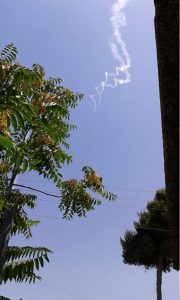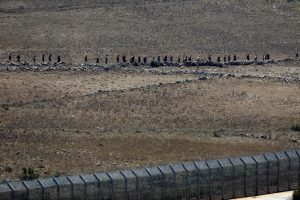
By Nidal al-Mughrabi and Dan Williams
GAZA/JERUSALEM (Reuters) – U.N.- and Egyptian-mediated talks on a deal to tamp down tensions between Israel and the Gaza Strip are in “advanced stages”, a senior member of the Palestinian enclave’s dominant Islamist Hamas group said on Wednesday.
The remarks were echoed by a top Israeli lawmaker, suggesting a possible breakthrough after four months of confrontations and clashes that stirred mutual threats of war.
Still the border remained tense on Wednesday. The Israel army said militant gunfire struck an engineering vehicle along the frontier, and that in response a tank fired at a Hamas post. No injuries were reported.
Shortly after, air raid sirens went off in the southern Israeli town of Sderot, sending residents running for shelter. At least two rockets fell in the area and one person was hurt, according to emergency services.
Palestinian officials then said Israel carried out an air strike in northern Gaza, causing no injuries.
Gazans launched weekly, sometimes violent, border protests against Israel on March 30, their anger exacerbated by a grinding Israeli-Egyptian blockade and funding cuts by Hamas’s rival, the Western-backed Palestinian President Mahmoud Abbas.
The Israeli army has killed at least 158 Palestinians, while a Gaza sniper killed an Israeli soldier. Israel has lost tracts of forest and farmland to fires set by incendiary kites and helium balloons flown over the frontier. There have also been several, mostly bloodless shelling exchanges.
Neither Hamas nor Israel, which last fought a war in 2014, appears keen on another full-blown conflict. But public demands by either side for a detainee release by the other appear to have been a stumbling block in securing a long-term truce.
“We can say that actions led by the United Nations and Egypt are in advanced stages and we hope it could yield some good from them,” Khalil Al-Hayya, deputy Hamas chief in Gaza, told Al Jazeera television.
“What is required is for calm to be restored along the border between us and the Zionist enemy (Israel).”
“NEW DAY”
Israel has played down prospects for a comprehensive ceasefire, speaking in terms of a more limited quid-pro-quo.
In return for calm in Gaza, Israeli officials said on Sunday they would reopen a commercial border terminal that had been shuttered in response to the fire damage, and expand a Palestinian fishing zone.
Netanyahu called off a trip to Colombia this week to attend to the Gaza truce talks, and was due to convene his decision-making security cabinet on Thursday to discuss the negotiations.
Avi Dichter, the committee of the Israeli parliament’s foreign affairs and defense committee, struck a cautiously upbeat note on Wednesday. “I very much hope that we are on the brink of a new day on the matter of Gaza,” he told reporters.
Neither the United Nations nor Egypt have publicly detailed their proposals for Gaza, beyond saying they should bring extensive economic relief for its 2 million Palestinians, many of them plagued by unemployment and failing public utilities.
Hayya said foreign donors were collecting “hundreds of millions of dollars” for electricity, water, health and job-creation projects in Gaza, but that these “require stability”.
Israel wants to recover the bodies of two soldiers killed in the Gaza war, and wants freedom for two of its civilians who wandered into the enclave, in exchange for any far-ranging truce deal with Hamas.
For its part, Hamas demands that Israel free Palestinian security prisoners – a proposal that Israeli Prime Minister Benjamin Netanyahu’s far-right coalition partners balk at.
“We want to free our brave prisoners and we have no objection to beginning now,” Hayya said. “Let it be a prisoner swap deal, (Palestinian) prisoners in return for Zionist soldiers.”
(Editing by Mark Trevelyan and Alison Williams)











